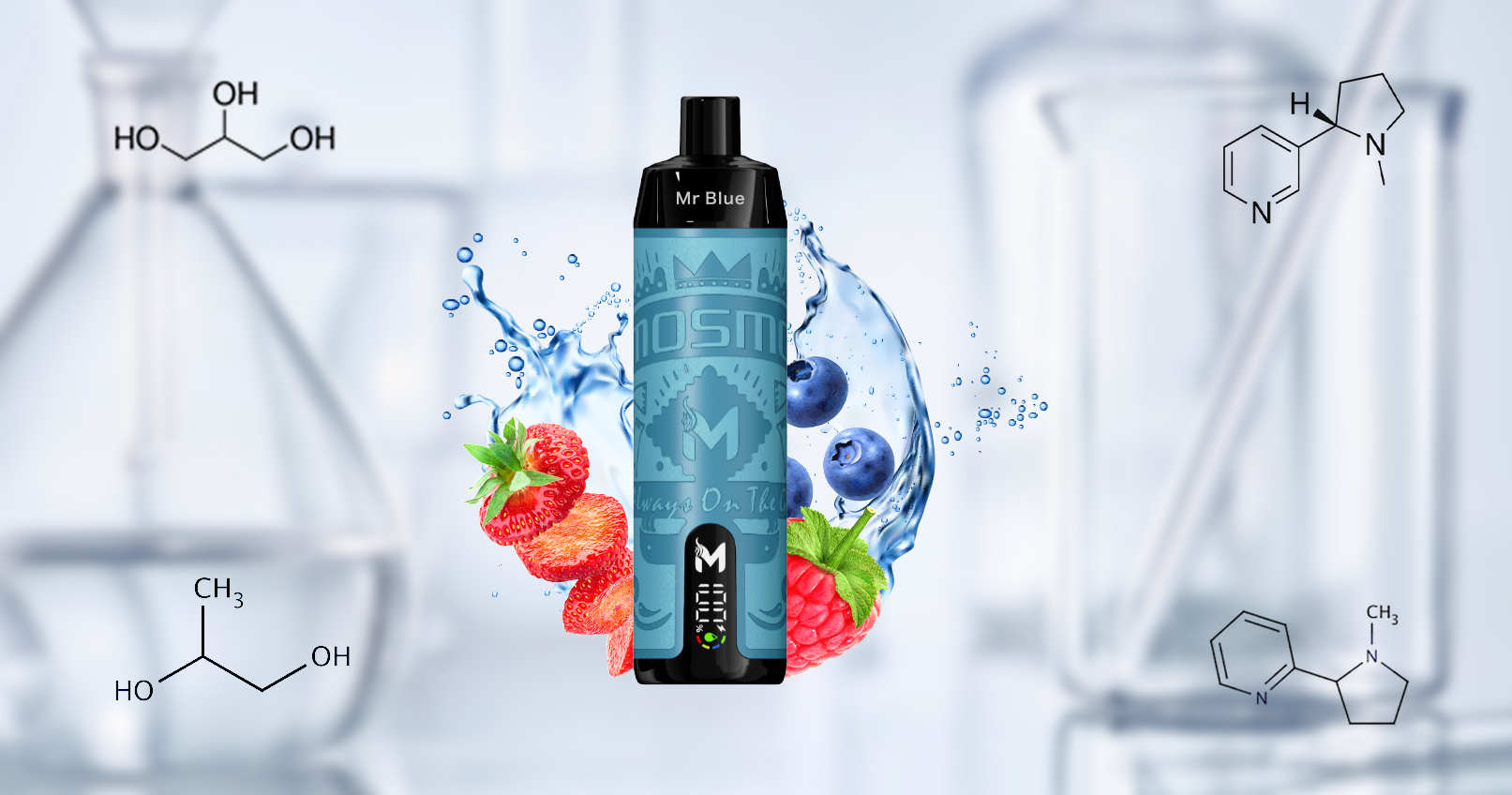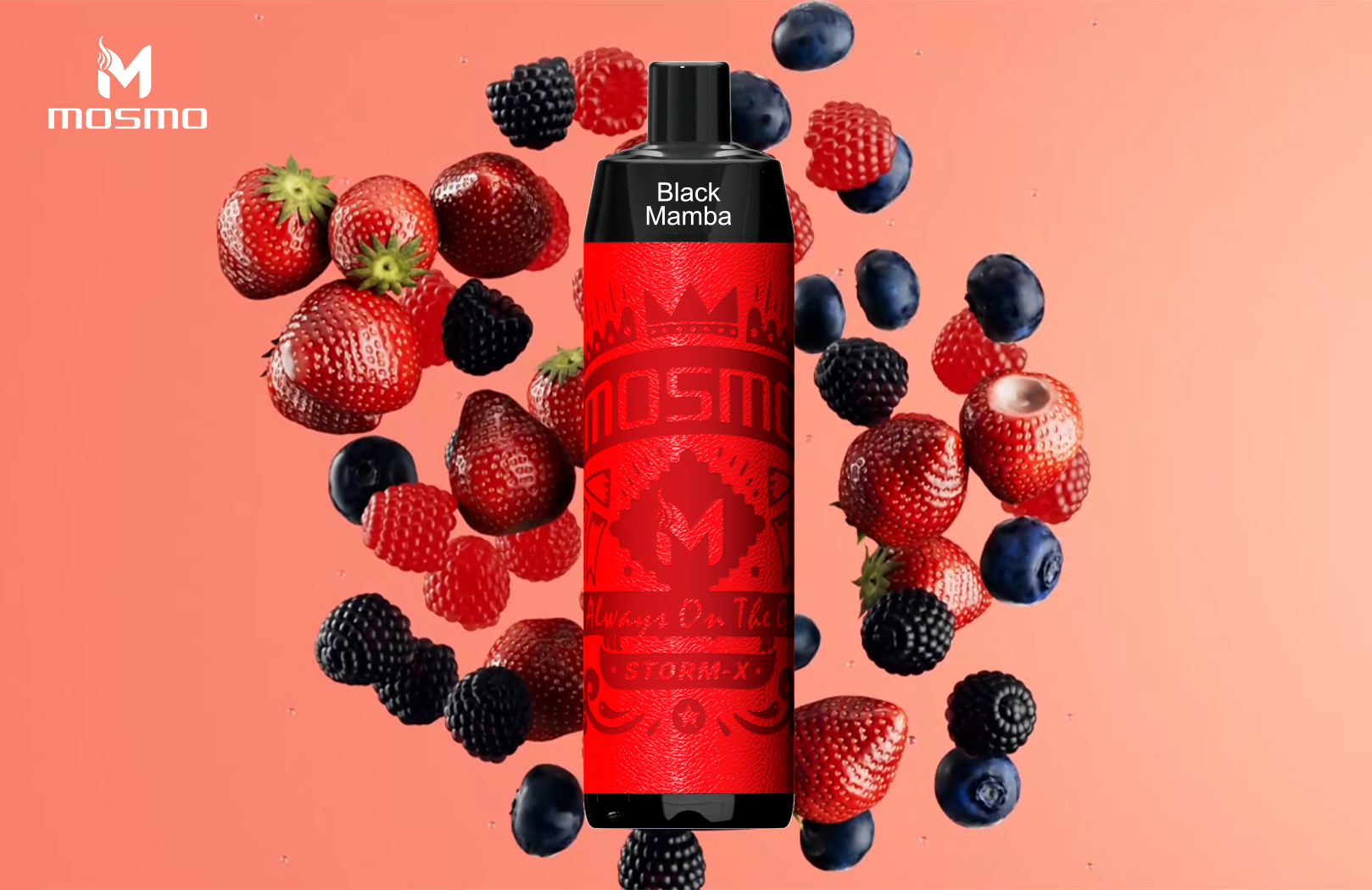In this ever-changing world, smokers are increasingly inclined towards smoking alternatives. Disposable vape devices have taken over the nicotine consumption market, providing a safer alternative to smoking. They not only satisfy the nicotine cravings but also offer a fresh taste and more personalized options. When you select various flavors, have you ever wondered what exactly is behind the e-liquid in electronic cigarettes? What gives e-cigarettes their unique flavors? If you’re a fan of e-cigarettes or curious about this , join me in delving into the knowledge of e-liquid.
What is E-liquid ?
E-liquid, also known as vape juice or vape liquid, is the flavored liquid used in electronic cigarettes. This specialized liquid is poured into the cartridge or tank of an e-cigarette and then transformed into aromatic vapor through a vaporizer. With the assistance of flavor additives, e-liquid can create a variety of flavors to meet the diverse preferences of e-cigarette users.
It’s important to note that e-liquid should be stored properly and should not be ingested directly. It should only be used through devices such as disposable vape.
What Ingredients are in E-Liquid and How Safe are They ?
Despite the wide array of flavors available on the market, the basic components of e-liquid remain consistent. There are four main ingredients in total:
1. Propylene glycol, which serves as the base liquid.
2. Vegetable glycerin, which promotes vapor formation.
3. Food-grade flavorings, which create the taste.
3. Synthetic or organically sourced nicotine.
Above listed ingredients used in the liquid are widely utilized in the food, perfume, and pharmaceutical industries, deemed non-toxic, and are considered harmless to health, as evidenced by years of laboratory research.
Let’s take a closer look at each component:
Propylene Glycol (PG) is a thick, clear liquid with a slightly sweet taste and is an excellent humectant. It is non-toxic and widely used as a food additive, plasma substitute, in pharmaceutical formulations, cosmetics (such as toothpaste, shampoo, lotions, deodorants, and ointments), and in the treatment of tobacco blends. In e-liquid, it acts as the base, dissolving and binding all other ingredients, enhancing the flavoring agents, and improving taste delivery. Propylene glycol is commonly used in the food industry as a preservative and is also used in the UK medical industry, such as in asthma inhalers. It serves primarily as the “base” ingredient in e-liquid, having a lower viscosity than vegetable glycerin.
Vegetable Glycerin (VG) is a thick, clear liquid with a slightly sweet aftertaste. It can be synthetic or derived from plants or animals. VG is also widely used in the production of cosmetics and food as a humectant and thickening agent. Glycerin is present in almost all products and cosmetics we use daily. In e-cigarettes, VG’s higher viscosity compared to PG helps produce denser vapor.
Flavoring Additives give the vapor its unique smell and taste. These flavorings are also used in the food industry, as well as in health products and skin beauty products. By combining different aromatic concentrates, any flavor sensation, even the most complex ones, can be accurately mimicked. Popular e-liquid flavors include tobacco, fruit, beverages, candies, and mint, among others.
Nicotine is a key ingredient in many e-liquids. Many people choose to vape to enjoy the pleasure of nicotine without inhaling the dangerous chemicals produced by burning cigarettes. There are two forms of nicotine in e-liquids: freebase nicotine and nicotine salts.Freebase Nicotine is the most commonly used form in most e-liquids. It is a potent, easily absorbed source of nicotine that can produce a strong throat hit at high strengths. Nicotine Salts also known as “nic salts,” provide a faster and smoother nicotine hit. They cause little to no throat irritation at lower strengths, making them popular among vapers who dislike the throat hit sensation. Nicotine salts are also an excellent choice for people transitioning from smoking to vaping for the first time, as they allow for higher strengths and quicker satisfaction of cravings. They are also referred to as sub-ohm salts because they need to be vaporized at high temperatures, making them well-suited for sub-ohm devices.
How to Choose the Right E-Liquid Ratio?
The ingredients in e-liquid can be used in different ratios to create different vaping experiences. Varying ratios of PG and VG can increase vapor production or enhance flavor. You can determine the type of e-liquid to use by checking the resistance of the coil in your vaping device. It’s recommended to use e-liquids with higher VG content with coils of lower resistance (e.g., coils with resistance below 1 ohm) for optimal results.
For coils with resistance between 0.1 to 0.5 ohms, e-liquids with ratios of 50%-80% VG can be used. Higher VG e-liquids produce larger, denser clouds.
For coils with resistance between 0.5 to 1 ohm, e-liquids with ratios of 50PG/50VG or 60%-70% VG can be used. E-liquids with PG content exceeding 50% may cause leakage or produce a burnt taste.
For coils with resistance above 1 ohm, e-liquids with ratios of 60%-70% PG can be used. Higher PG content results in a more pronounced flavor and stronger throat hit, while VG provides smoother vapor production.
How Long Does E-liquid Last and How to Store It ?
To ensure you make the most of your e-liquid, handle it with care. Generally, e-liquids can last up to 1-2 years, so proper handling is crucial to extend their shelf life as much as possible. We recommend storing the liquid in a cool, well-ventilated place, away from direct sunlight and extreme temperatures.
While it’s difficult to completely avoid exposure to air when opening and closing e-liquid bottles, there’s no problem with their usability once opened. We suggest using them within 3 to 4 months for optimal freshness.
Post time: Jun-05-2024







